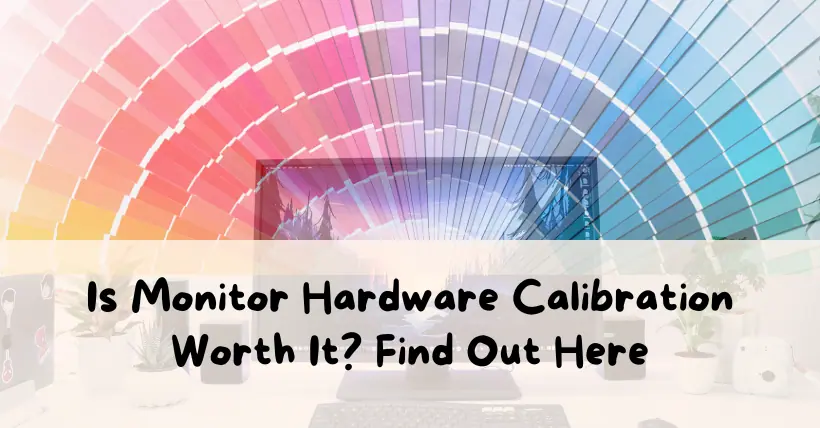The significance of color calibration lies in the fact that no monitor displays accurate colors, whether it’s a high-end monitor costing tens of thousands or a budget monitor for a few hundred. Every monitor, regardless of price, displays inaccurate colors compared to the true colors found in nature, and this inaccuracy worsens over time due to color degradation.
For monitors that require precise color accuracy, calibration is essential. It’s not just about matching colors across different workstations but about reducing the gap between displayed colors and real-world colors.
For high-end monitors, the biggest issue is not just color accuracy but degradation over time. Even if a monitor is perfectly calibrated when it’s new, after a year or so, the colors will no longer be accurate. Strictly speaking, calibration should be done at least every six months. Lower-quality monitors degrade more quickly, while better monitors degrade more slowly and to a lesser extent.
Of course, this is critical for industries where color accuracy is paramount, such as digital art, publishing, and printing. If your needs aren’t as demanding, calibrating a mid-range monitor once every six months to a year may suffice, though I’d still recommend calibrating every six months for the best results.
There are two types of calibration: software calibration and hardware calibration.
- Software calibration captures the display’s output through a colorimeter and applies a corrected color management profile, which the graphics card uses to adjust the signal before it reaches the display.
- Hardware calibration adjusts the signals within the display itself using a chip built into the driver board that tweaks the electrical signals sent to the display panel.
Software calibration can result in some quality loss, while hardware calibration generally does not. However, neither method can compensate for the physical degradation of the display panel, as neither the computer nor the monitor can directly measure the panel’s actual output in real-time. All calibration processes are based on preset adjustments.
Since degradation is a natural part of a display panel’s aging process, and neither software nor hardware calibration can track this real-time degradation, both require regular recalibration. Hardware calibration is more reliable than software calibration because it doesn’t cause any losses, but it still needs to be updated periodically—it’s not a one-time fix.
If you have the option, hardware calibration is the better choice due to its lossless nature, and it’s worth opting for if possible.

Disclaimer:
- This channel does not make any representations or warranties regarding the availability, accuracy, timeliness, effectiveness, or completeness of any information posted. It hereby disclaims any liability or consequences arising from the use of the information.
- This channel is non-commercial and non-profit. The re-posted content does not signify endorsement of its views or responsibility for its authenticity. It does not intend to constitute any other guidance. This channel is not liable for any inaccuracies or errors in the re-posted or published information, directly or indirectly.
- Some data, materials, text, images, etc., used in this channel are sourced from the internet, and all reposts are duly credited to their sources. If you discover any work that infringes on your intellectual property rights or personal legal interests, please contact us, and we will promptly modify or remove it.



